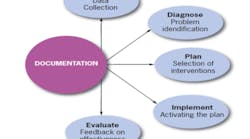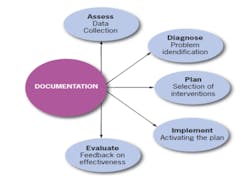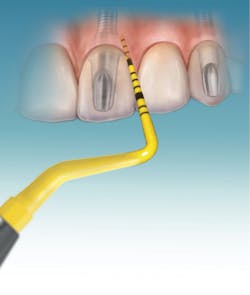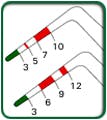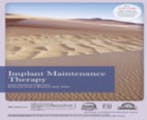Other resources are also available to assist us in rendering evidenced based care. The Parameter on Comprehensive Periodontal Examination is one such resource.(3) Another is Comprehensive Periodontal Therapy: A Statement by the American Academy of Periodontology. It sets forth the scope, objective, and procedures that constitute periodontal therapy.(4) And yet another is the Parameter on Periodontal Maintenance.(5)
Regarding dental implant maintenance, the Consensus of the Seventh European Workshop on Periodontology offers comprehensive information. From understanding the cellular and molecular mechanisms of host-microbial interactions to treatment of peri-implant infections, there is a wealth of information at our fingertips.(6,7,8,9)
References
1. Standard of Applied Dental Hygiene Practice. Chicago, Ill. American Dental Hygienists’ Association. 2008. http://www.adha.org/downloads/adha_standards08.pdf.
2. Standard of Applied Dental Hygiene Practice. Chicago, Ill. American Dental Hygienists’ Association. 1985.
3. The Parameter on Comprehensive Periodontal Examination. J Periodontol 2000; 71:847-848. http://www.perio.org/resources-products/pdf/847.pdf.
4. Comprehensive Periodontal Therapy: A Statement by the American Academy of Periodontology. J Periodontol; July 2011, 943-949. http://www.perio.org/resources-products/pdf/periodontal-therapy_statement.pdf.
5. Parameter on Periodontal Maintenance. J Periodontol 2000; 71:849-850. http://www.perio.org/resources-products/pdf/849.pdf.
6. Sanz M and van Winkelhoff AJ, on Behalf of Working Group 1 of the Seventh European Workshop on Periodontology. Periodontal infections: understanding the complexity – Consensus of the Seventh European Workshop on Periodontology. Journal of Clinical Periodontology. Special Issue: Proceedings of the 7th European Workshop on Periodontology, Volume 38, Issue Supplement s11, pages 3–6, March 2011.
7. Kinane DF, Preshaw PM, and Loos BG on Behalf of Working Group 2 of the Seventh European Workshop on Periodontology. Host-response: understanding the cellular and molecular mechanisms of host-microbial interactions – Consensus of the Seventh European Workshop on Periodontology. Journal of Clinical Periodontology. Special Issue: Proceedings of the 7th European Workshop on Periodontology, Volume 38, Issue Supplement s11, pages 44–48, March 2011.
8. Tonetti, MS and Chapple ILC on Behalf of Working Group 3 of the Seventh European Workshop on Periodontology. Biological approaches to the development of novel periodontal therapies – Consensus of the Seventh European Workshop on Periodontology. Journal of Clinical Periodontology. Special Issue: Proceedings of the 7th European Workshop on Periodontology, Volume 38, Issue Supplement s11, pages 114–118, March 2011.
9. Lang NP and Berglundh T on Behalf of Working Group 4 of the Seventh European Workshop on Periodontology: Periimplant diseases: where are we now? – Consensus of the Seventh European Workshop on Periodontology. J Clin Periodontol 2011; 38 (Suppl. 11): 178–181.
10. www.periowise.com/.
11. http://www.hu-friedy.com/resource/viewResource.aspx?ResourceID=144.
12. http://www.ineedce.com/coursereview.aspx?url=1881%2fPDF%2fImplant+Maintenace+Therapy.pdf.pdf&scid=14300.
13. http://onlinelibrary.wiley.com/doi/10.1111/cid.2010.12.issue-s1/issuetoc.
Maria Perno Goldie, RDH, MS
To read previous articles in RDH eVillage FOCUS written by Maria Perno Goldie, go to articles.
